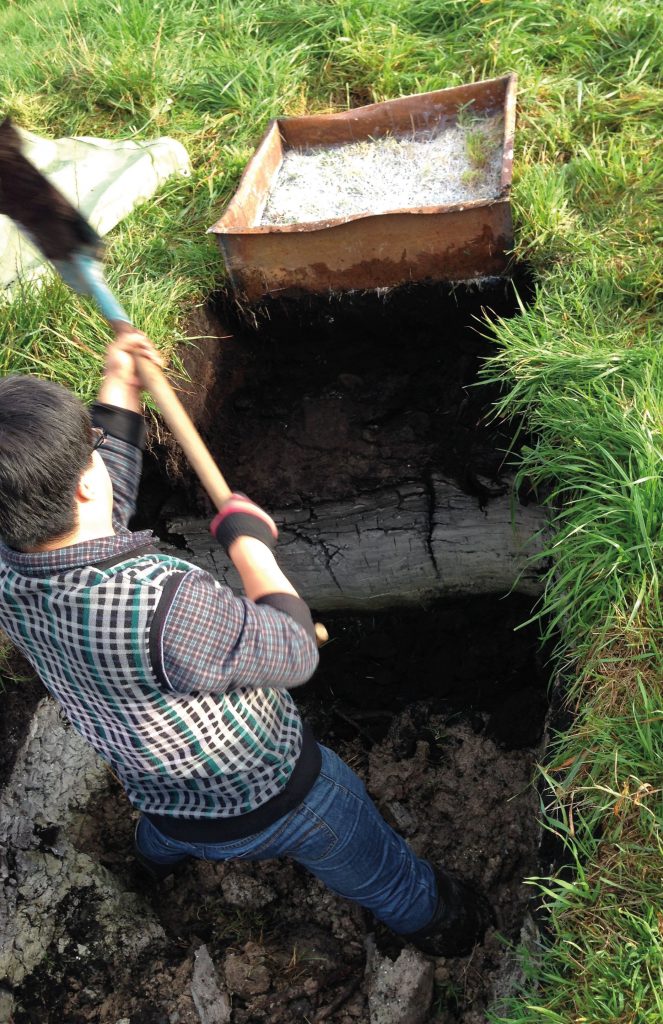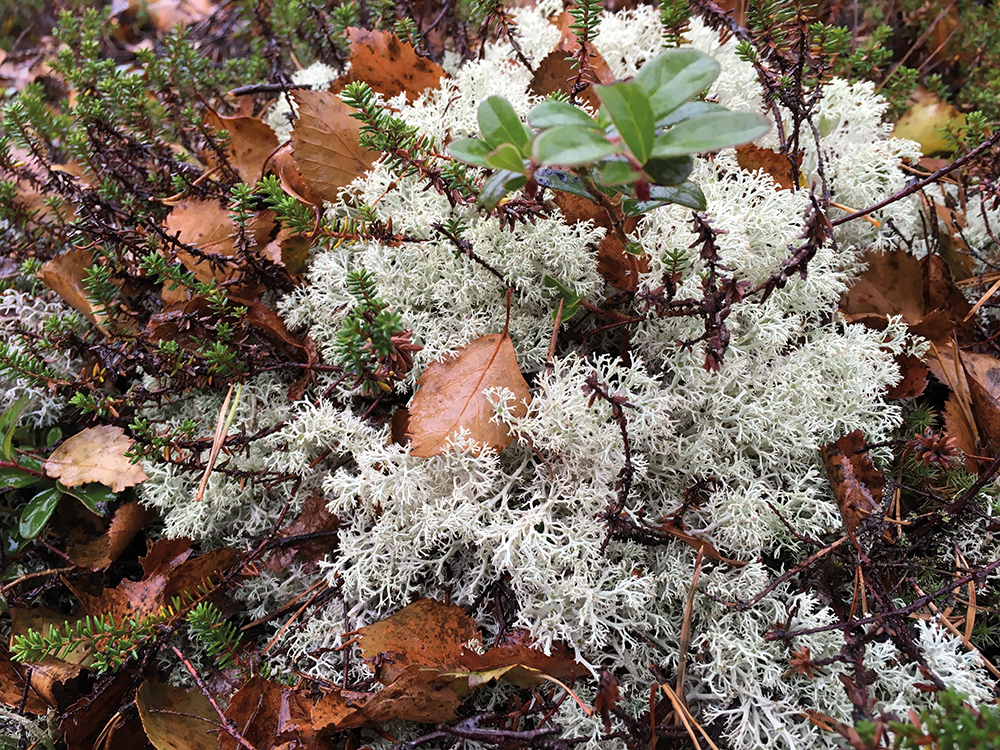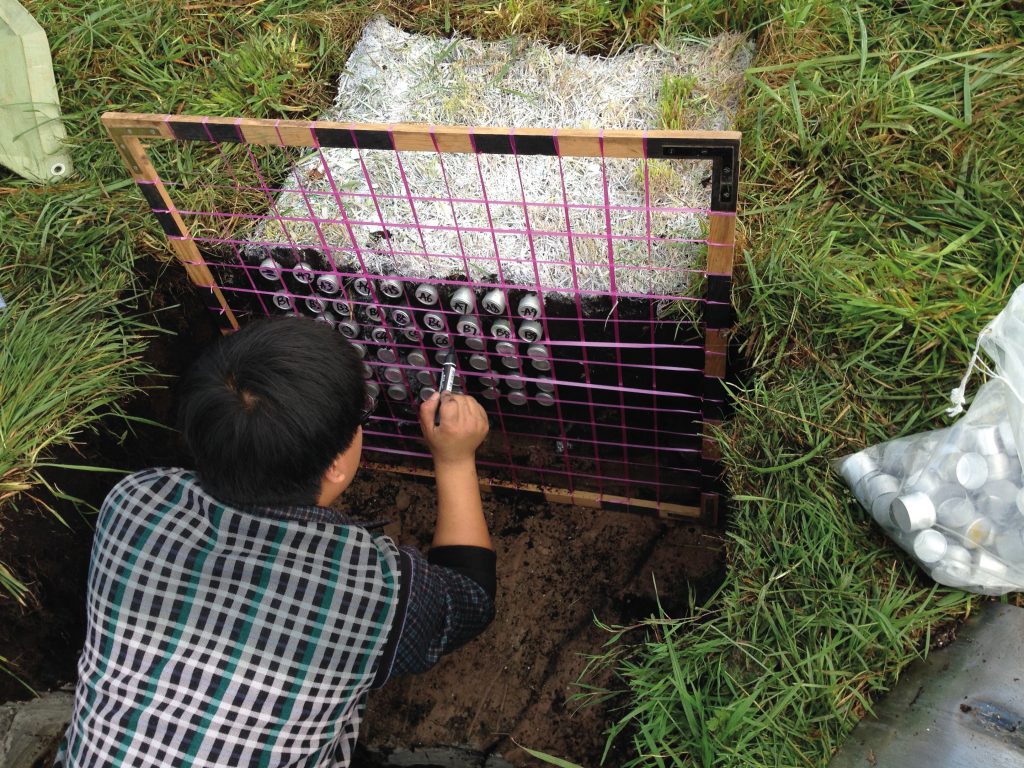Dr Bernd Lennartz – Maintaining Peatland Health to Mitigate Climate Change
The global peatland ecosystem has often been overlooked in its importance within the global geochemical cycle. It contains approximately 21% of global carbon, and their maintenance and restoration are vital for lowering atmospheric carbon dioxide, the primary driver of climate change. Dr Bernd Lennartz of the University of Rostock and his team of interdisciplinary scientists are investigating peatlands and how they respond to changing climate conditions.
Valuable Ecosystems
You might think that the desolate bog stretches in the Scottish Highlands are merely a frustratingly soggy obstacle for hikers, but peatlands are an extremely significant ecosystem on Earth. Found in almost every country, they cover 3% of the Earth’s land surface, and support a wide biodiversity.
Peatlands form over thousands of years, in waterlogged areas. Under these conditions, the decomposition of plant material is extremely slow. New plants grow on top of dead material and so plant material accumulates. These partially decayed plants form peat soil, which has a high carbon content, a low density and a high water content.
Peatlands have a significant impact on both the local and global environment. They act as a source of food and habitat for countless species, while also regulating the global water cycle and filtering pollutants. They also play a major role in global biogeochemical cycles, especially acting as a major carbon sink. In fact, peatlands remove 0.37 billion tonnes of carbon dioxide from the atmosphere each year, meaning that their maintenance and restoration is vital in the fight against climate change.
Dr Bernd Lennartz of the University of Rostock and his team of interdisciplinary scientists are investigating the functions of peatland ecosystems. Using a combination of in-situ measurements and modelling approaches, they are furthering our understanding of these complex ecosystems and how they may be affected by Earth’s changing climate.

Human Impacts
Human activity is having a severe effect on the health of peatland ecosystems. Peatland areas are frequently drained to provide space for agriculture and construction. They are often found along coastal stretches, where the placement of structures such as dykes and levees alter the water and nutrient exchange between the ocean and wetland. Peatlands have also been over-exploited, with peat material being used as a fossil fuel in many countries.
As peatland is drained of its water, the soil’s pore structure is altered and becomes aerated. This means that the plant material is mineralised, and the peat starts to be transformed into a mineral soil. This process is termed ‘peat degradation’ and is accompanied by soil subsidence (of several metres in selected locations) and a loss of ecosystem functions.
Research into peatland ecosystems has been limited until recently, particularly the behaviour of water in peat soil (its ‘hydraulic’ properties). Dr Lennartz and his colleagues established a dataset of hydraulic information collated from previously published research (including their own) representing a wide range of peat types from all over the world. This included information about soil water retention, as well as data on hydraulic conductivity (how easily water can move through the soil). The analysis of the data employing various hydraulic models allowed the team to identify general information on the hydraulic behaviour of peat-soils in various stages of degradation.
They found that degraded peat soils possess different hydraulic properties to pristine peatland. Peat in good condition has a low density with high porosity. However, as it degrades through drainage, its porosity decreases, and its overall density rises. This affects how easily water can move through the soil, how well it is filtered by the peat soil and how much can be stored. The team revealed that the bulk density of peatland serves as an excellent proxy for determining the extent of peat degradation.
Dr Lennartz and his colleagues then went on to propose a system of categorising degraded peat soils with respect to their ecosystem function in the water cycle. By identifying their soil water storage capacity and their hydraulic conductivity, along with the importance of the peatland within the surrounding ecosystem, the team created a scale ranging from pristine to extremely degraded. The researchers hope that this categorisation system will help future peatland conservation projects to identify the best methods of peat restoration.

Interdisciplinary Research
Dr Lennartz is part of a working research group that combines in-situ measurements with modelling, the Baltic TRANSCOAST research training group. The team comprises an interdisciplinary group studying how hydraulic, geochemical and biological processes are connected using a low-lying coastal peatland adjacent to the Baltic Sea as a case study. They found that changes in this peatland ecosystem have far-reaching effects, within both the neighbouring terrestrial ecosystem and the marine environment.
The team is particularly interested in how the Baltic peatland may respond as sea levels rise due to global warming, fundamentally altering the ecosystem. The study area exhibits a complex relationship between groundwater, river and marine water sources that affects the peatland soils. The interdisciplinary nature of the research team means they are able to analyse a wide range of peatland features using various measurements throughout the peatland, the surrounding ecosystems and the adjacent marine environment. This includes changes in salinity caused by flood events, the effects of increased nutrients in degraded peat and the emission of greenhouse gases. Eventually, the team hopes to establish models based on these measurements to analyse peatlands in coastal settings around the world.
Climate Change and Peatland
The degradation of peatlands has far-reaching global effects. They act as a major freshwater store, containing approximately 10% of global freshwater. As mentioned earlier, they also represent a large carbon sink, containing around 21% of the global soil carbon, owing to the large quantities of plant material. As peatland is drained, the peat soil becomes aerated, and organic matter and nitrogen become mineralised. This leads to the production of greenhouses gases including carbon dioxide, methane and nitrous oxide.
In a recent study, Dr Lennartz and his team compiled a large dataset of peatland properties, such as pore structure, the ratios of oxygen and hydrogen to carbon and changes in dissolved carbon compounds, from peatlands in Europe, Russia and Canada. This was built both from published data as well as a variety of in-situ measurements, such as bulk density and pH. The team then completed statistical analysis to estimate nitrous oxide emissions.
The team used bulk density to represent the extent of peat degradation, and discovered that the release of nitrous oxide and dissolved carbon compounds was correlated to this. They found that the more degraded the peatland, the more compounds are released. The researchers then created a model that can be used to predict these emissions across different types of land management areas. This information has not been well defined in previous predictions of peatland emissions, and so this is vital information for accurately modelling the effects of climate change. The functions the team derived are even more accurate than those used in the latest IPCC report.
Dr Lennartz and his team’s expertise in nutrient dynamics has proved to be invaluable in their research into peatlands. These vitally important ecosystems play significant roles in global biogeochemical cycles, exporting nutrients to rivers and seas. About 15% of the world’s peatlands have already been drained, and due to climate change, an increased level and intensity of droughts will continue to threaten the health of peatland ecosystems.
The ability to accurately understand and predict greenhouse gas emissions from peatlands will be vital for understanding how the global climate will continue to change. As human-induced greenhouse gas levels continue to rise, it is important we find ways to reliably conserve and restore our peatlands, and understanding their complex, interconnected systems is the best place to start.

Agricultural Soils
In another research direction, Dr Lennartz has also used modelling and experimental methods to study the movement of nutrients in agricultural soils as well as catchments – ranging from individual field sites to river basins. Although their use is usually carefully monitored in crop production, nitrogen and phosphorous-based fertilisers often enter ground and surface water, where they can have severe consequences for the aquatic ecology.
In several published studies, the researchers found that the yearly nutrient export from agricultural fields is related to the amount of precipitation and the ways in which nutrients move through the soil. In this context, the artificial drainage of agricultural fields plays a central role, as it fast-tracks the movement of nutrients from the soil surface into water bodies. Therefore, artificial drainage systems may cause unexpected high concentrations of nutrients in ground and surface water.
Dr Lennartz and his colleagues then assessed the applicability of a well-established model called the Soil and Water Assessment Tool (SWAT) for predicting the nitrogen and phosphorus concentrations, along with the crop yield, in agricultural catchments within Germany. Using the SWAT model, the team was able to reproduce daily measurements of streamflow and nutrient concentrations with high accuracy, indicating that it could be a useful tool for predicting the movement of water and nutrients in various climate change and land-use change scenarios.
Understanding how nutrients may be exported from a catchment area to the sea, or other large water bodies, is vital for reducing agricultural pollution and enhancing water quality. The team has shown that a combination of in-situ measurements and modelling can provide accurate information and therefore aid with sustainable land management.
In their research, the group is now focusing on the so-called legacy effect, which describes the accumulation of nutrients in catchments over decades. This effect means that nutrients will continue to be exported from the land to the sea for many years, even if radical changes in land management are promptly implemented.
Reference
https://doi.org/10.33548/SCIENTIA457
Meet the researcher

Professor Bernd Lennartz
Agricultural and Environmental Sciences
University of Rostock
Germany
Professor Bernd Lennartz was awarded his PhD in 1992 at the University of Kiel in Germany. He is currently a Professor of Soil Physics at the University of Rostock. He has also worked as the Scientific Director of the Jimma Institute of Technology, Ethiopia, and Head of the Maritime Systems Department at the University of Rostock. Now, Professor Lennartz is the spokesperson for Baltic TRANSCOAST, a research group that investigates the biogeochemical processes where land and sea meet, and the impact of climate change on low-lying coastal peatland. Professor Lennartz is particularly interested in the movement of water though soil, fields and the landscape, with a focus on nutrient mobility and management of agricultural soils.
CONTACT
E: bernd.lennartz@uni-rostock.de
W: https://www.baltic-transcoast.uni-rostock.de/
KEY COLLABORATORS
Professor Fereidoun Rezanezhad, University of Waterloo, Canada
Professor Dominik Zak, Aarhus University, Denmark
FUNDING
Deutsche Forschungsgemeinschaft (DFG)
FURTHER READING
B Lennartz and H Liu, Hydraulic functions of peat soils and ecosystem service, Frontiers in Environmental Science, 2019, DOI: 10.3389/fenvs.2019.00092.
H Liu and B Lennartz, Hydraulic properties of peat soils along a bulk density gradient—A meta study, Hydrological Processes, 2019, 33, 101–114.
H Liu, D Zak, F Rezanezhad and B Lennartz, Soil degradation determines release of nitrous oxide and dissolved organic carbon from peatlands, Environmental Research Letters, 2019, DOI: 10.1088/1748-9326/ab3947.

Creative Commons Licence
(CC BY 4.0)
This work is licensed under a Creative Commons Attribution 4.0 International License. 
What does this mean?
Share: You can copy and redistribute the material in any medium or format
Adapt: You can change, and build upon the material for any purpose, even commercially.
Credit: You must give appropriate credit, provide a link to the license, and indicate if changes were made.
More articles you may like
Grandmothers: Innovation Through Tradition
Grandmother Project – Change through Culture (GMP) is an organisation dedicated to documenting the role of grandmothers and demonstrating the effectiveness of grandmother-inclusive strategies in improving the health and well-being of women, children, and adolescents. GMP’s groundbreaking work challenges conventional wisdom to transform community-based interventions in Africa and beyond, harnessing a powerful but often overlooked resource: the wisdom and influence of grandmothers.
Dr Robert Larkin | Cultivating Change to Improve Soil Health and Increase Potato Yield
Environmental quality and food production are facing the pressing challenges of climate change and global population growth. Dr Robert Larkin from the United States Department of Agriculture-Agricultural Research Service (USDA-ARS) and a team of plant scientists developed and tested a range of crop management systems to help overcome these compounding challenges. Their work is improving soil health and increasing the yield of potato crops, contributing to the future food security of nations.
Professor Giorgio Buttazzo | Artificial Intelligence and a Crossroads for Humanity
Where do we stand with artificial intelligence? Might machines take over our jobs? Can machines become conscious? Might we be harmed by robots? What is the future of humanity? Professor Giorgio Buttazzo of Scuola Superiore Sant’Anna is an expert in artificial intelligence and neural networks. In a recent publication, he provides considered insights into some of the most pressing questions surrounding artificial intelligence and humanity.
Dr Ralf Adam | New Technologies Shaping the Future of Oral Hygiene
Understanding the efficiency of various toothbrush technologies is essential for achieving optimal oral health. Dr Ralf Adam, who leads a dedicated team at Procter & Gamble in Germany, is keen to investigate the complexities of these technologies. His team have provided new insights into the best toothbrush types for plaque removal and the maintenance of gum health. By highlighting the importance of informed oral care decisions and ongoing investigations, this vital research works towards ensuring everyone can achieve a brighter, healthier smile.




